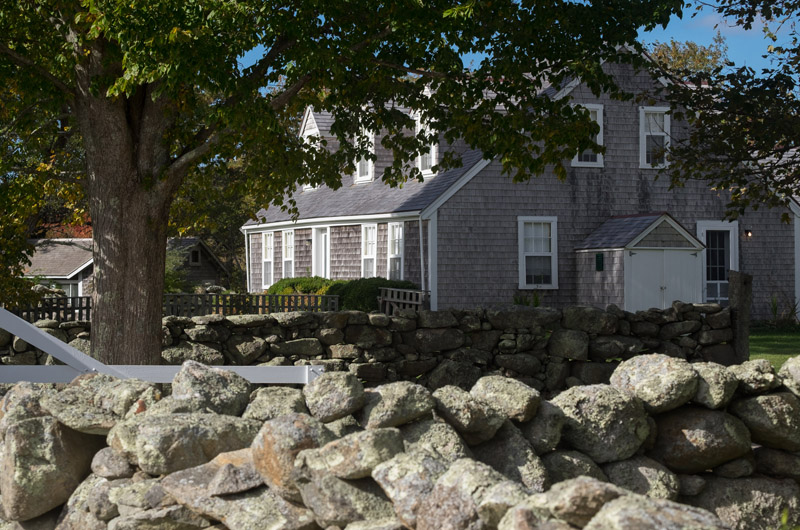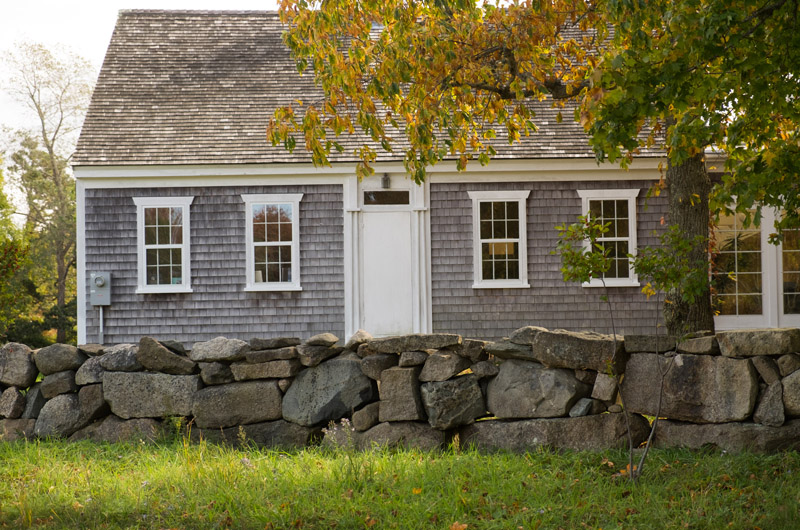A proposed bylaw amendment aimed at preserving pre-Civil War houses in Chilmark had its first public hearing on Monday, drawing general support. The amendment relates to the residential building size bylaw, which sought to limit the size of new houses by requiring a special permit for houses over 3,500 square feet and by not allowing any houses to be built over 6,000 square feet. The minimum lot size throughout most of Chilmark is three acres.
The big house bylaw, as it became known, was overwhelmingly approved at the annual town meeting in 2013, but had the unintended consequence of encouraging people to tear down historic houses on their property to maximize the allowable size of new construction.

Now the Chilmark planning board is proposing to amend the bylaw so that historic houses, defined as built before the Civil War, would not count toward the total allowable living area on a property.
“If people wanted to build bigger houses on their property, it will keep them from tearing it down for that reason,” said Pamela Goff, who first proposed the amendment about a year and a half ago, and has worked with a planning board subcommittee to develop the new rules.
The brief amendment, as drafted in July, specifies the 79 pre-Civil War houses listed in the master plan, although many of those have been torn down since 1985.
“We think there are at least 60 old houses [built] in that period,” planning board member Joan Malkin said this week at a public hearing for the amendment. Others have estimated anywhere from 50 to 75 pre-Civil War houses still standing in Chilmark.
About five people attended the hearing on Monday afternoon, the most yet at any of the subcommittee meetings that have addressed the issue. “I really haven’t heard anything negative,” planning board member Janet Weidner said after the hearing. Other members agreed that the amendment would have a mostly neutral effect.
“We are unable to think of any cost that this imposes on anyone,” Mrs. Malkin said, adding that property values would hardly change. No special permits would be needed to utilize the exemption, although any changes to the exterior of the historic house would require zoning board approval. The listed houses could also exceed the town’s 800-square foot limit for guest houses.
The hearing drew general support for the proposal, but also some concern for the many houses in Chilmark that it leaves out. Some hoped that it would be expanded to apply to houses built as late as World War I, and even some mid-century houses with unique architectural styles.
Former planning board member Cathy Thompson pointed to the family home of the architect Eliot Noyes in Menemsha, and others around town, as examples of architectural, if not historical, significance. “Second homes are frequently opportunities for architects to express their fanciful nature,” she said. She also noted that in many cases across the country, a property older than 50 years may be considered historic.
Ms. Weidner countered that the original intent of the amendment was to protect older houses, which can be harder to maintain and are more likely to be torn down. But she also suggested revamping the town master plan to include noteworthy houses from the last 100 years.
Mrs. Goff agreed there were likely some significant houses built after the Civil War, but didn’t think they should be included in the amendment. “It’s just better government to have the most precise bylaws you can so that they don’t get diluted or abused in the future.”
Mrs. Goff currently serves on the town conservation commission and the Martha’s Vineyard Land Bank commission.
Planning board chairman Richard Osnoss suggested additional wording in the amendment to include houses that are not listed in the master plan but that the historic commission finds noteworthy. He said the board was “not ready to extend the date” in the amendment, but thought the topic was worth discussing. Historic commissioner Jane Slater, who attended the hearing, suggested that efforts to protect the newer houses should happen separately.
Another area of concern was whether the proposed changes would lead to greater housing density in Menemsha, which has historic houses but a minimum lot size of 1.5 acres. Mrs. Malkin hesitated to make changes to the amendment without knowing the extent of the problem.
Former planning board member Daniel Greenbaum, who resigned this month after several years on the board, had compiled a list of historic properties on lots of one acre or less, which the board plans to revisit.
“We need to know how many we are talking about,” Ms. Weidner said.
The board agreed to continue the hearing to Dec. 14. After planning board approval, the amendment would come to a vote at the annual town meeting in the spring.






Comments (1)
Comments
Comment policy »